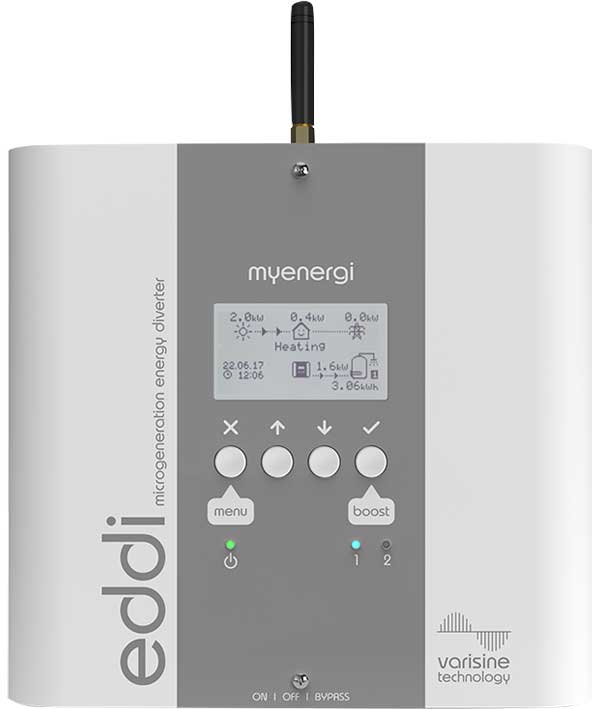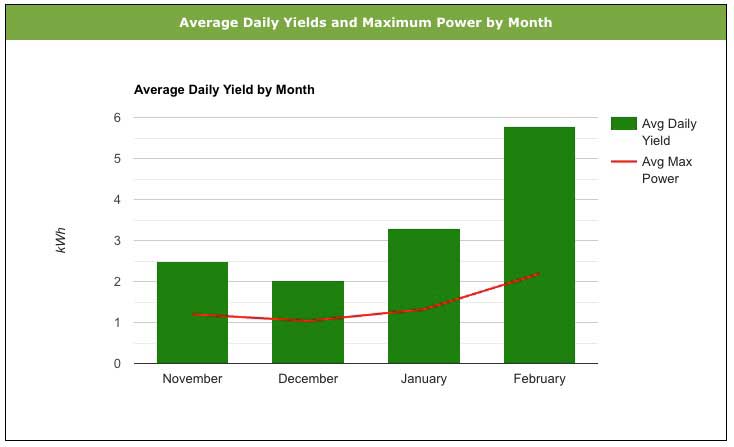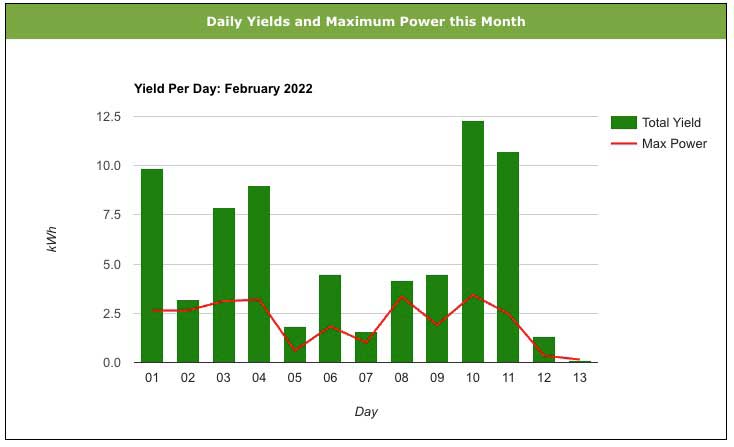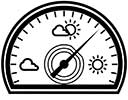Solar Tactics
A post just for Laura as she seems to be more interested in our solar panels than she is with her own! We’re beginning to get the hang of how to make the most of them. That will change throughout the year of course and we’ll have to adjust as we go. The issue with solar power is the fact that there is plenty of it in the summer months when you don’t need it and not enough in the winter when you do. Fortunately, having them installed in November meant that we experienced the worst conditions to start with so things can only get better.
Winter Tactics – Rate Shifting
Throughout the winter day lengths are short, the sun is low in the sky and there are plenty of overcast days where solar generation is next to nothing. Even on the sunniest days the amount of generation is low. Added to this is the fact that we have the heating on, the lights are on more often than not and we’re all at home quite a bit. With that in mind we were never going to break even during the darker months.
Our tactic for the winter therefore was to ‘rate shift’. In other words we would use our battery to store cheap rate electricity and use that during peak times. We Force Charge the battery overnight whilst electricity is cheap. We can then use this in the morning once electricity is at peak rate. Once the sun is up we then start using the power that the solar panels are generating and still have cheap rate electricity stored in the battery should we need it.
Using this tactic we have been able to use very little peak rate electricity. Some days none at all. On the best days we tend to use some battery power first thing in the morning and then top it back up with solar power during the day. This means there is plenty of power in the battery to last us through the evening as well.
There are certain things, namely the shower, that draw more than the battery can supply at any one time so sometimes using a little power from the grid is unavoidable with our set up.
Moving into Spring
We’ve only had the panels and battery for a few months, but the stats from the app I built already show signs of improvement as we move towards Spring. As expected, the average daily yield per day was at it’s lowest in December but is increasingly steadily.
Our best two days of yield so far have also occurred in February (12.31kWh on the 10th and 10.71kWh on the 11th). Things haven’t been quite so good so far this weekend though!
Out best peak output of 3438 Watts was also recorded on February 10th. I’m not sure if we can go much higher than this. This is due to the fact that despite having a potential power generation of 4.32kW from the panels, there is always going to be some loss in the system and more importantly our inverter has a maximum output of 3.6kW. So, even if the panels can produce more we can only manage 3.6kW through the inverter.
As the days continue to lengthen these total daily yields will hopefully increase. As the sun rises higher in the sky and the weather improves then we should hit that maximum inverter capacity of 3.6kW more often and hopefully stay there for longer each day as well. On some days this increasing yield leads to issues in itself. Namely, the question of what to do with all of that surplus electricity
Dealing with Surplus Electricity
We don’t get paid for any electricity that we export back to the grid. So, if the solar panels are producing well and the battery is full then we have to decided what to do with the surplus. As Anna has been working from home she has been able to put the washing machine, tumble drier or dishwasher on whenever this is the case. It’s not an exact science but it does mean that we are using the surplus rather than simply giving it away.
The best option is to divert the surplus electricity to our car. That has a massive 64kWh battery in it so there is plenty of room to store the power there. It’s not that simple though because the car needs at least 1.4kW of surplus before it can start charging. That means that by the time the house has used some of the electricity we are producing we need to be generating 2kW or more before the car is likely to start charging. It also takes 30 seconds or so for the car charger to kick in. So, when generation is only just enough to divert to the car it only takes a passing cloud for it to drop below that threshold. If it does the car stops charging and the surplus is sent back to the grid (wasted as far as we are concerned). It then takes a while for the car to start charging again once the cloud has passed.
Diverting with an Eddi

We are therefore toying with the option of getting an ‘Eddi‘ from MyEnergi installed. The Eddi is a device that diverts surplus electricity from your solar panels into the hot water system. It works in a similar fashion to the car charger from MyEnergi (the Zappi) but as it’s heating water rather than charging the car it can kick in at a much lower power threshold.
Having one would therefore utilise that energy we have been sending back to the grid whenever the house battery is fully charged, there is surplus from the solar panels, but not enough surplus for the Zappi to start charging the car. Under these circumstances and Eddi would allow us to use that surplus to heat water in our water tank rather than sending it back to the grid.
I think it would come into it’s own during Spring and Autumn. If we get an electrician out to fit an Eddi then it will also be a good opportunity to check the thermostat on the water heater to make sure it’s working correctly and to get some CT clips installed so that we can monitor and control everything through the MyEnergi app.
Summer Tactics
Our tactics will change in the summer. For a start we will stop force charging the battery overnight. We are expecting to have more than enough electricity from the solar panels to meet our needs during the day. Any surplus will go to the battery first so that we should go into the evening with a fully charged battery most days. We won’t have the heating on overnight so will use very little electricity once it is dark and what we do use should come from the battery. If anything our electricity usage from the grid should be negligible. Although, the high power things such as the shower will still use some.
We’ll have the car plugged in whenever we can so that surplus during the day can go to charging the car and if we get an Eddi it should also keep the hot water at temperature for us. I’m sure there will even be some days where everything is topped up and we have no option but to export to the grid. If this becomes the norm and we are exported a significant amount then we’ll have to look into getting paid for it. The Smart Export Guarantee (SEG) doesn’t pay much per kWh exported but something will be better than nothing.
The idea was never to recoup the initial outlay by exporting electricity though. The solar panels and battery were always a strategy for saving money on the bills. With electricity prices rising we might not manage that but we will at least shield ourselves from the price hikes.
















